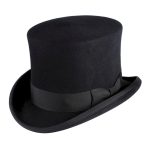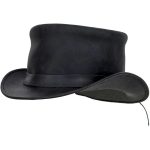Fashion fabrics play a crucial role in the textile and apparel industry, serving as the backbone of garment design and construction. The choice of fabric can dramatically influence the aesthetic, drape, and durability of an outfit. From the soft touch of cotton to the luxurious feel of silk, the variety of available materials can be overwhelming for designers, tailors, and anyone interested in creating their clothing. Understanding the different types of fashion fabrics, their properties, and best applications can empower you to make informed choices whether you’re an aspiring fashion designer or simply looking to enhance your wardrobe. In this comprehensive article, we’ll delve into the fascinating world of fashion fabrics, exploring their history, key characteristics, types, and practical tips for selecting and caring for them.
By the end of this guide, you will have a robust understanding of fashion fabrics that will enhance both your appreciation for textiles and your ability to choose the right materials for any project.
The History of Fashion Fabrics
To appreciate the significance of fashion fabrics, it helps to explore their rich history and development over the centuries.
Early Beginnings: The Origins of Fabric
The history of fabrics dates back thousands of years to ancient civilizations. The earliest textiles were made from natural fibers derived from plants and animals. For instance, linen, made from flax, was used extensively in ancient Egypt for garments, while wool became popular in Mesopotamia. Over time, cultures discovered various weaving techniques and began dyeing fabrics using natural pigments extracted from plants and minerals.
The Middle Ages and Renaissance
During the Middle Ages, the development of new weaving techniques and the rise of trade routes led to the introduction of luxurious textiles such as silk imported from the East. The Renaissance period saw an explosion of creativity in fashion, with increased demand for elaborate and ornate fabrics. Velvet, brocade, and rich tapestry fabrics became associated with nobility and the wealthy, setting the foundations for fashion as we know it today.
Modern Innovations
The Industrial Revolution marked a significant turning point in the production of fashion fabrics, leading to technological advancements and the mass production of textiles. With the invention of the power loom and spinning machinery, manufacturers could create fabrics at an unprecedented scale. In contemporary fashion, innovations in synthetic fibers have expanded the possibilities for designers, allowing for a broader range of stunning textures, colors, and designs.
Essential Characteristics of Fashion Fabrics
Understanding the characteristics of fashion fabrics is crucial for making informed choices when constructing clothing. Here are some key properties to consider:
Fiber Content
The fiber content of a fabric determines its texture, breathability, and durability. Fabrics can be classified into two main categories:
- Natural Fibers: Made from plant or animal sources. Common examples include cotton (plant), wool (animal), silk (insect), and linen (plant). Natural fibers are usually breathable and comfortable against the skin.
- Synthetic Fibers: Created through chemical processes. Examples include polyester, nylon, and acrylic. These fibers are often more durable and resistant to wrinkles and stains than natural fibers.
Weight
The weight of a fabric affects its drape and suitability for various types of garments. Fabrics can range from lightweight (e.g., chiffon) to heavy (e.g., canvas). Understanding fabric weight is essential for selecting appropriate materials for specific designs.
Drape
Drape refers to how a fabric falls or hangs when it is used in garments. Fabrics with good drape (e.g., silk or rayon) are often used for flowing dresses, while stiffer fabrics (e.g., denim or canvas) work well for structured garments.
Texture
Texture impacts both the visual appeal and tactile experience of fabric. Some fabrics have a smooth finish (e.g., satin), while others may have a rough or nubby texture (e.g., tweed). Texture can create visual interest and enhance the overall design of a garment.
Breathability
Breathability is an essential attribute, especially for garments worn in warm weather. Fabrics like cotton and linen allow air circulation, making them comfortable for hot climates, while synthetic fabrics may retain heat and moisture.
Types of Fashion Fabrics
The world of fashion fabrics is vast and varied, with numerous options available for designers and consumers alike. Below are some popular types of fabrics commonly used in the fashion industry:
Cotton
Overview: Cotton is one of the most widely used natural fibers, recognized for its softness, breathability, and versatility.
Uses: Suitable for a myriad of garments, including t-shirts, dresses, and casual wear.
Care: Cotton is generally machine washable and can be ironed easily.
Silk
Overview: Silk is a luxurious natural fiber known for its smooth texture and lovely sheen.
Uses: Commonly used in formal wear, blouses, and scarves, silk adds elegance to any outfit.
Care: Typically dry clean or hand wash with cold water. Silk should not be wrung out, as it can lose its shape.
Wool
Overview: Harvested from the fleece of sheep, wool is recognized for its warmth and elasticity.
Uses: Perfect for winter garments such as sweaters, coats, and suits.
Care: Hand wash or dry clean, as excessive washing can cause shrinkage.
Polyester
Overview: A popular synthetic fiber, polyester is known for its durability, wrinkle resistance, and ability to retain color.
Uses: Often blended with other fabrics, polyester is common in casual wear, activewear, and home textiles.
Care: Generally machine washable and quick to dry, polyester is easy to care for.
Denim
Overview: A sturdy cotton fabric, denim is renowned for its durability and casual appeal.
Uses: Primarily used for jeans, jackets, and casual wear.
Care: Machine washable, but it’s recommended to wash denim less frequently to maintain its color and texture.
Linen
Overview: Made from the fibers of the flax plant, linen is known for its breathability and natural texture.
Uses: Commonly used in summer clothing, tablecloths, and other home textiles.
Care: Hand wash or machine wash on a gentle cycle, and it can wrinkle easily, so ironing may be required.
Rayon
Overview: A semi-synthetic fiber made from processed cellulose, rayon mimics the softness of silk and feels comfortable against the skin.
Uses: Commonly used for dresses, blouses, and linings.
Care: Often requires dry cleaning, but can sometimes be hand-washed, depending on the type.
How to Choose the Right Fashion Fabric
Selecting the appropriate fabric for your project is a fundamental step in design. Here are some considerations to keep in mind when choosing fashion fabrics:
Understand Your Project Requirements
Begin by assessing the intended use and requirements of your garment. This includes considering factors such as:
- Occasion: Is the garment for everyday wear, formal events, or outdoor activities?
- Season: Should the fabric be lightweight for summer or heavier for winter?
- Functionality: Does the fabric need to stretch, wick moisture, or provide warmth?
Consider Comfort and Feel
The comfort level of a fabric is crucial for both the wearer and the desired style. For instance, if a garment will be worn close to the skin, opt for softer fabrics such as cotton or silk.
Evaluate Care and Maintenance
Different fabrics require varying levels of care. For everyday garments, select fabrics that are easy to wash and maintain. Formal wear might allow for fabrics that require dry cleaning or special care, as their appearance can often justify the extra effort.
Explore Color and Print Options
Fabrics come in a plethora of colors and prints. Consider the palette that fits your design vision, as well as how the colors may change in various fabric types. Remember to test swatches under different lighting conditions to see how colors can shift.
Budget Considerations
The price of fabrics can vary significantly based on quality, brand, and material. Establish a budget before shopping and seek out fabrics that meet your design needs while keeping costs in check.
Innovative Developments in Fashion Fabrics
Advancements in technology have led to the development of innovative fashion fabrics, reshaping the industry landscape.
Sustainability in Fabric Production
With increasing concern about environmental impacts, sustainable fabric production is becoming essential. Organic cotton, Tencel (made from sustainably sourced wood pulp), and recycled polyester are gaining popularity as eco-friendly options.
Performance Fabrics
For performance-oriented clothing, such as activewear, innovations in fabric technology have led to moisture-wicking, odor-resistant, and quick-drying materials. Manufacturers continuously research ways to enhance fabric performance to meet the needs of active consumers.
Smart Fabrics
Technological advancements have also paved the way for smart fabrics that incorporate electronics to monitor health or enhance performance. For example, fabrics that can regulate temperature or track heart rates are already being explored in the fashion industry.
Care Tips for Fashion Fabrics
Each type of fabric has specific care instructions to maintain its appearance and longevity. Here are general care tips for a few popular fabric types:
Cotton Care Tips
- Washing: Machine wash in cold water on a gentle cycle to avoid shrinking.
- Drying: Tumble dry on low heat or air dry to prevent excessive wrinkles.
Silk Care Tips
- Washing: Hand wash in cool water with mild detergent for best results.
- Ironing: Use a low heat setting on your iron and avoid direct contact with fabric to prevent scorching.
Wool Care Tips
- Washing: Hand wash or use a wool-specific detergent; avoid hot water to prevent shrinkage.
- Storage: Store wool garments folded in a cool, dry place to prevent moth infestation.
Polyester Care Tips
- Washing: Machine wash on warm setting with regular detergent and avoid bleach.
- Drying: Tumble dry on low to prevent wrinkles and maintain fabric integrity.
Linen Care Tips
- Washing: Machine wash on a gentle cycle and avoid high spin speeds to prevent wrinkling.
- Ironing: Best ironed when slightly damp on a high heat setting.

Conclusion
Understanding fashion fabrics is essential for anyone involved in design, sewing, or simply enjoying clothing. The right fabric can enhance a garment’s style, comfort, and practicality. This comprehensive guide has covered the historical significance, types, and features of fashion fabrics, providing a foundation for making informed choices in your projects.
Whether you’re a professional designer or a DIY enthusiast, knowing how to select and care for fabrics empowers you to create beautiful garments that reflect your unique style. As trends evolve and technology advances, the world of fashion fabrics will continue to expand, introducing innovative materials that blend aesthetics with functionality. Embrace the art of fabric selection and enjoy the endless possibilities it presents in your creative endeavors.

